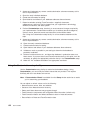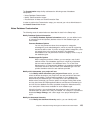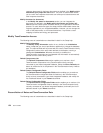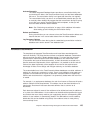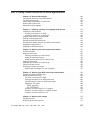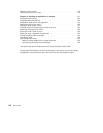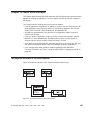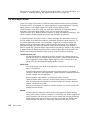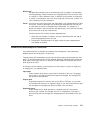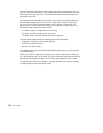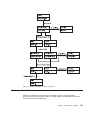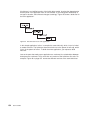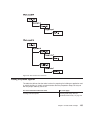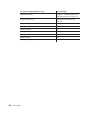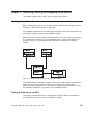
Build servers are started by a TeamConnection administrator. For more information, see
“Chapter 11. Installing, starting, and stopping build servers” on page 137.
The build object model
Figure 44 on page 133 shows the TeamConnection objects and events that constitute
the build function, as illustrated in a sample application named msgcat.exe. This build
object model is a conceptual model of the build function. When you use
TeamConnection to define a build, you work with a
build tree
(a simplified graphical
illustration of the build object model), which you can access through the
TeamConnection GUI. “Working with a build tree” on page 133 explains build trees. This
section explains the build objects and events represented in a build tree.
In TeamConnection, the build function is always described and discussed in terms of
the final output of the build: the product or executable file that the build produces. For
the sample application shown in this illustration, msgcat.exe is the build output and
appears at the top of the build object model and as the top branch of the build tree
illustrated on page 133. When you want to actually build the product, you request a
build of msgcat.exe. TeamConnection uses the build tree that you define for this product
to determine which objects and build events it needs to generate the final output. The
objects and events that TeamConnection uses for a build include the following:
TeamConnection part
An object produced or used during a build, containing any data produced or
used by the build. For example, a part called hello.c contains the source code
for the application called msgcat. A part might be a text or binary file, or an
object such as a VisualAge Generator generic collector.
Build event
An individual step in the build of an application, such as the compiling of
hello.c into hello.obj.
A specific build request typically contains many build events. For example, if
you start a build of an entire application, TeamConnection initiates build events
for each compile and link operation.
Build requests are processed in a round-robin fashion for each
TeamConnection family involved in a build. Build events are initiated in the
order that that they are received by each build machine involved in the build
request, sometimes in parallel.
Build event processing is internal to TeamConnection; you cannot interact with
these processes directly.
Builder
An object that can transform a build event’s input parts into output parts by
calling tools such as linkers or compilers. For example, one builder might know
how to transform the input part hello.c into the output part hello.obj. A different
builder might know how to transform hello.obj into msgcat.exe. Builders are
associated with the parent, or output part, rather than the child, or input.
130 User’s Guide



